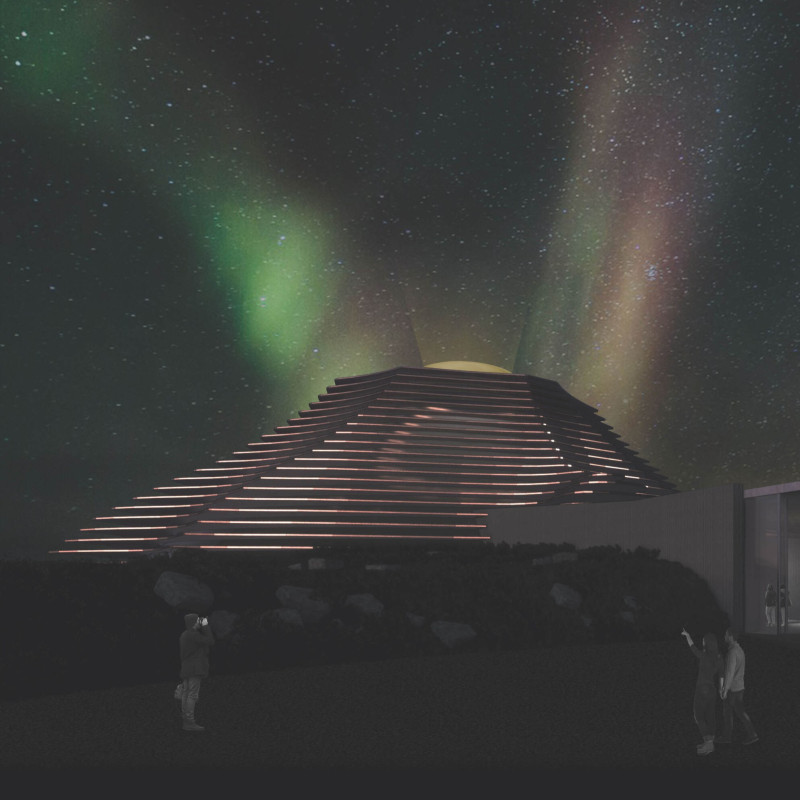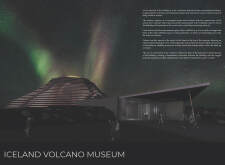5 key facts about this project
The Iceland Volcano Museum is located in the striking landscape of Iceland, designed to engage visitors with the region's rich volcanic history. Its main purpose is to educate the public about the area's unique geological features, utilizing an architectural concept that reflects the experience of being within a volcano. The design incorporates an organic form that blends with the natural environment, creating a strong link between the built structure and the surrounding landscape.
Architectural Form
The entrance presents itself as a rectangular prism, which stands out against the flowing contours enveloping the museum. This clear distinction not only marks the entry point but also piques the curiosity of visitors, inviting them to explore further. Inside, the layout features ramps and stairs that direct guests downward, mimicking a journey into the depths of a volcano. The spatial design enhances the thematic experience of geological exploration, making it more engaging for everyone who visits.
Spatial Experience
A notable aspect of the museum is its dome structure, which offers expansive views of the surrounding volcanic landscape. Visitors can see significant formations like Myvatn and Hverfjall from the dome. This ascent to an elevated point enriches the connection between the museum and its geographical context, highlighting the relationship between architecture and the natural world. The experience within the museum encourages a deeper understanding of the region's geology.
Material Integration
Corten steel is used for the contours wrapping around the building, contributing significantly to its overall character. The weathered look of this material softens the building's mass, allowing for the growth of vegetation on its surfaces, which further ties the structure to Iceland's rugged terrain. Corten steel reflects resilience and power, echoing the strength found in volcanic landscapes.
The design creates a thoughtful interaction between the building and its surroundings. The flowing lines and organic shapes are reminiscent of the local landforms, guiding visitors through a narrative that resonates with the natural environment. The architectural elements invite exploration, fostering a connection to Iceland’s geological richness.






















































